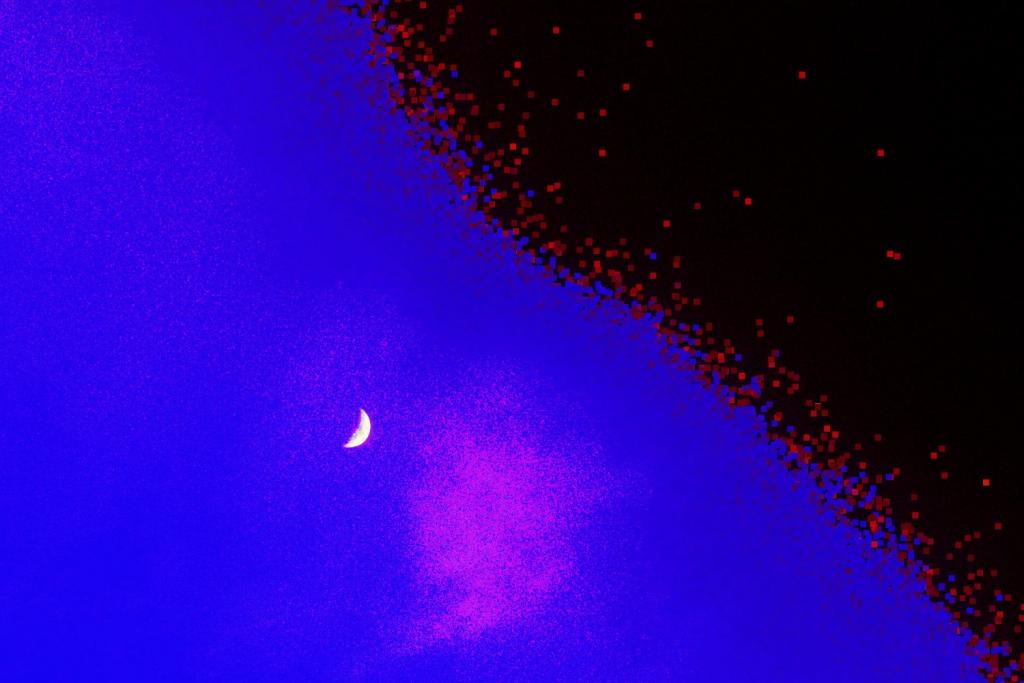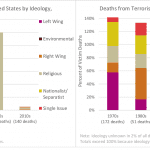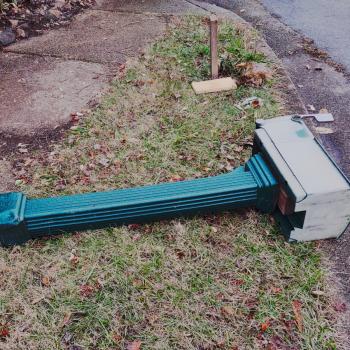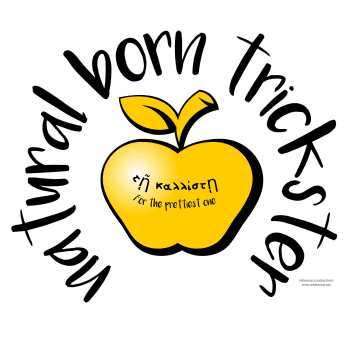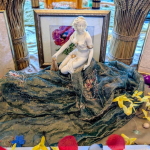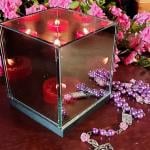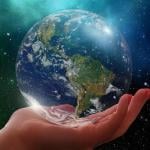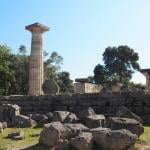Everybody knows the four classical elements: earth, air, fire, and water.
In the Western esoteric tradition, “spirit” is usually taken as the fifth element. And as we talk about the Samhain season, we often talk about a “veil” between this world and the “spirit world” becoming thinner.
But there is a Japanese tradition of five elements, the godai (五大). It has roots in Buddhist teachings from China and India, but seems to be uniquely Japanese. In this system, the fifth element in addition to earth, air, fire, and water is ku (空) — “void, emptiness”.
(The “five elements” of Taoism and Chinese medicine, which show up in Japanese culture in different contexts than the godai, are a different sort of beast. The wu xing (五行) — water, wood, fire, earth, and metal — are not “elements” that aggregate to form the things of the world, but “phases” or “processes” of a cycle that living systems go through, of storage and generation, growth, blossoming, stability, and decline and dissolution returning to the start of the cycle. A topic for another time.)
The character ku is also read “kara” — as in “kara-te”, “empty hand”, referring both to the fact that the practitioner’s hand holds no weapon and to the esoteric, spiritual idea of “emptiness”. (And also a sort of pun on a different character also read as “kara” but meaning “Chinese”; we’ll refrain exploring that tangent for now.) So it’s a concept that is near and dear to my heart.
One of the most famous discussions of the Japanese godai is in the samurai Miyamoto Musashi’s book Go Rin No Sho, the Book of Five Rings. In the chapter on void, he writes “By knowing things that exist, you can know that which does not exist. That is the void….In the void is virtue, and no evil. Wisdom has existence, principle has existence, the Way has existence, spirit is nothingness.” (Victor Harris translation.)
This “emptiness” does not indicate a lack or deficiency, as we might talk about an car’s fuel tank being empty of gasoline, or the glass in front of me being empty of beer. What things are empty of is an individual, stable, separate self-nature. Things “mutually arise”, a state of affairs that the contemporary Zen teacher Thich Nhat Hahn calls “interbeing”.
Many people think that Buddhists, by definition, believe in reincarnation: that there exists an immortal soul or spirit that abandons the body at death, perhaps goes to a spirit world for a while, and gets put into another body at some point; like a pilot bailing out, returning to base, and then being assigned a new plane. (Wicca quite likely first absorbed its idea of reincarnation from Gerald Gardner’s exposure to Buddhism when he lived in Ceylon.)
But it’s more complicated than that. Certainly many Buddhists do believe in what we might call that “naive” idea of reincarnation. And the Buddha and leading Buddhist teachers did refer to stories about reincarnation — though some interpret those references as metaphors or fables, or as speaking in terms that people could understand with existing beliefs.
(Brad Warner recently made the interesting observation that, due to the structure of the Japanese language, when the great Zen teacher Dōgen occasionally referenced this idea of reincarnation, he didn’t even give any name to refer to the putative entity that jumps from body to body.)
Given the way that our culture is saturated with a Christianity that focuses on belief in a god and eternal salvation in an afterlife, it’s easy to forget that Buddha was sort of apathetic on such supernatural topics. His focus was on ending human suffering in this life. If he was teaching people who had a certain belief that wasn’t relevant either way to his core mission, but that he could make use of to help them, he might well have done so.
But a fundamental part of the Buddha’s doctrine was the idea of anatman, “no self” — the idea of emptiness as applied to the human person. While Buddhism teaches that the karma, the cause-and-effect chain of our actions, continues after death, anatman is quite at odds with the naive model of reincarnation.
This “no self” doesn’t mean that there’s nothing there. It sort of means the very opposite: that everything is there. “All know that the drop merges into the ocean, but few know that the ocean merges into the drop,” as the Indian mystic Kabir put it.
The void, the vast emptiness, is not an extinction but an expansion.
What if we thought of the veil between the worlds not as a separation between our physical realm and a realm made out of some more rarefied substance, but as the boundary between the ordinary view of reality where “form is form and emptiness is emptiness”, and that fuller view which sees that “form is emptiness, emptiness is form”, as the Heart Sutra puts it?
Perhaps we can take this time when the leaves fall and the trees show us their bones and the space within their branches, this time of inwardly-drawing energy, this time when we make use of pumpkins be creating a void within them, as a reminder from the universe about the freedom of emptiness.
